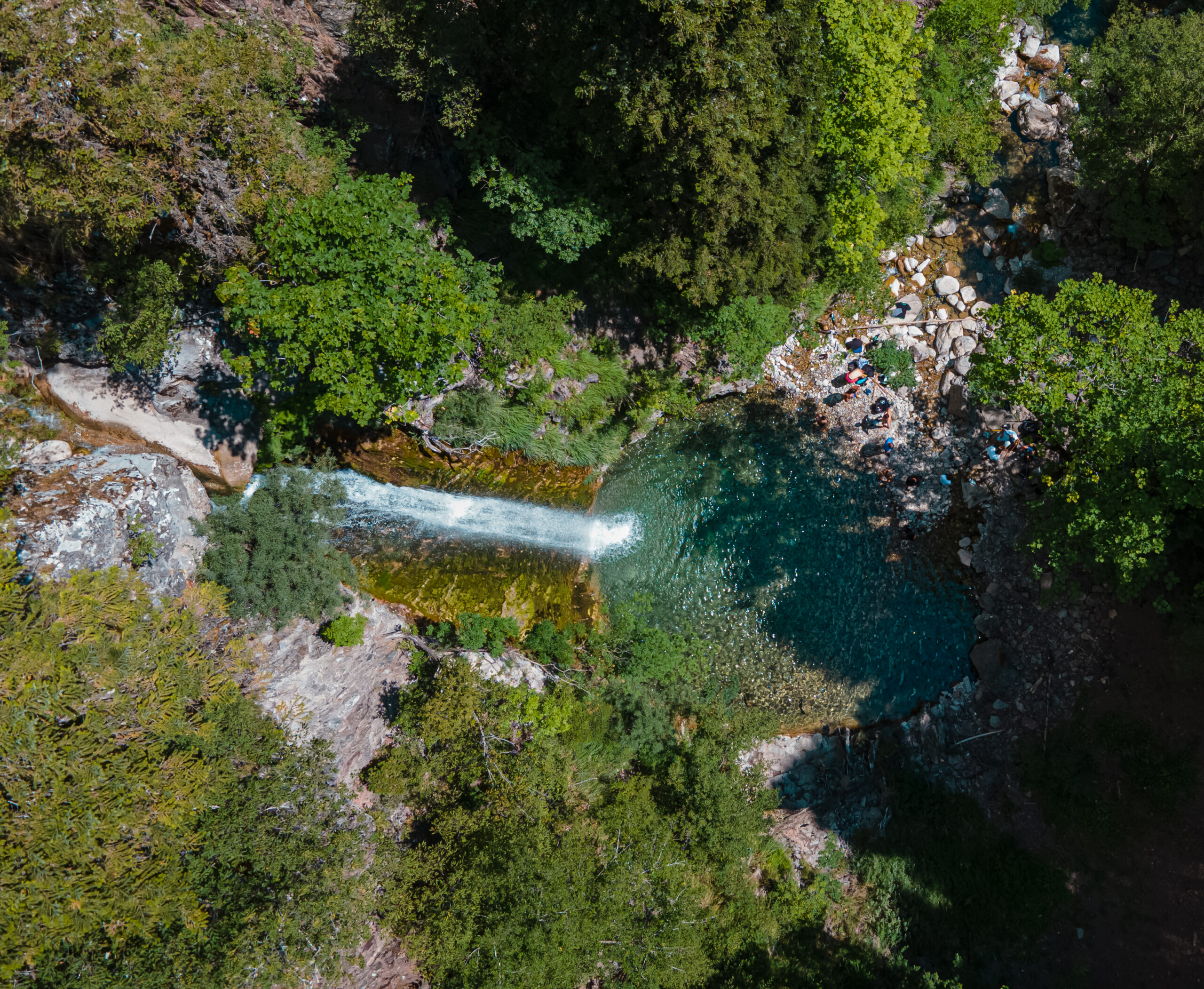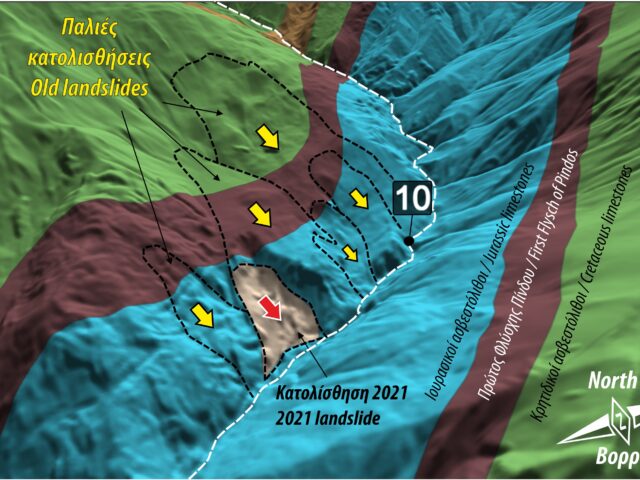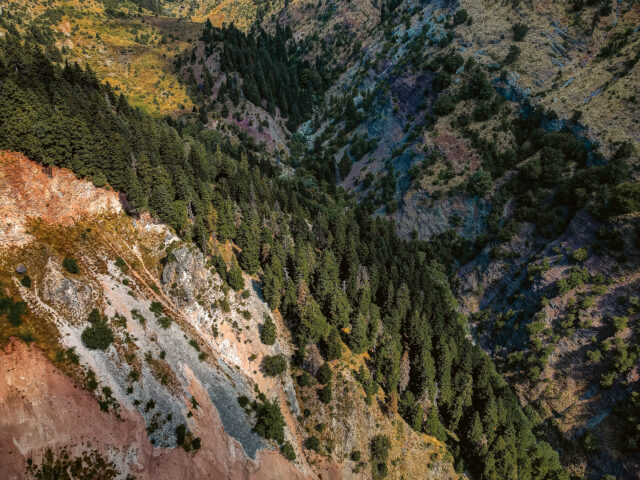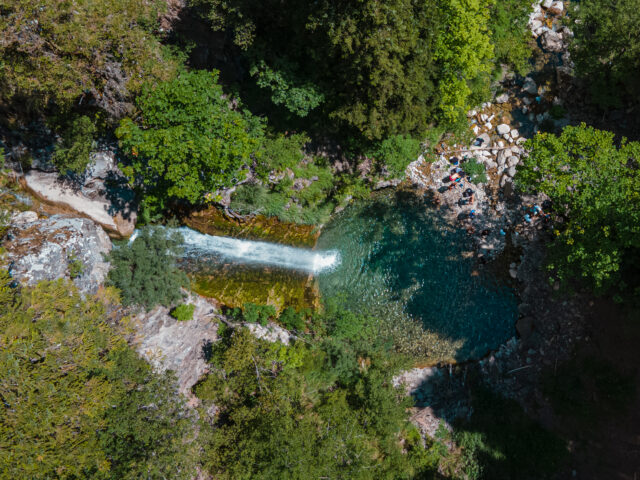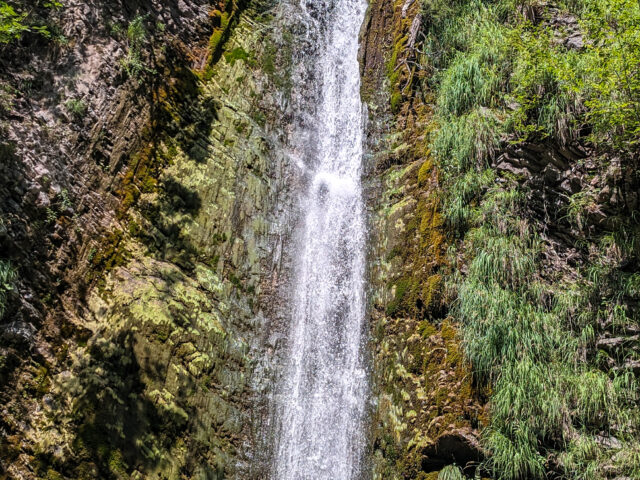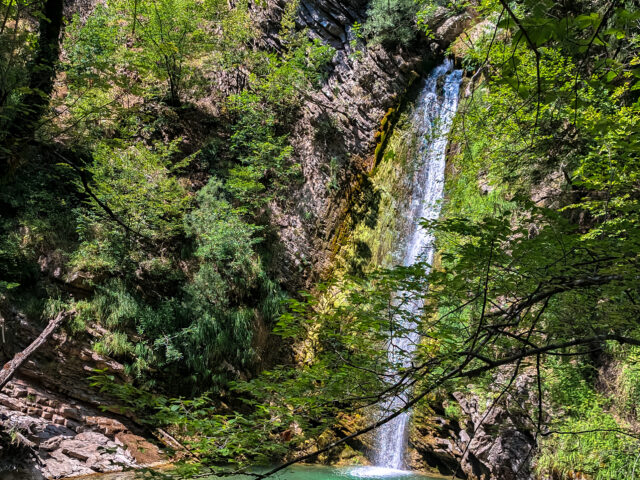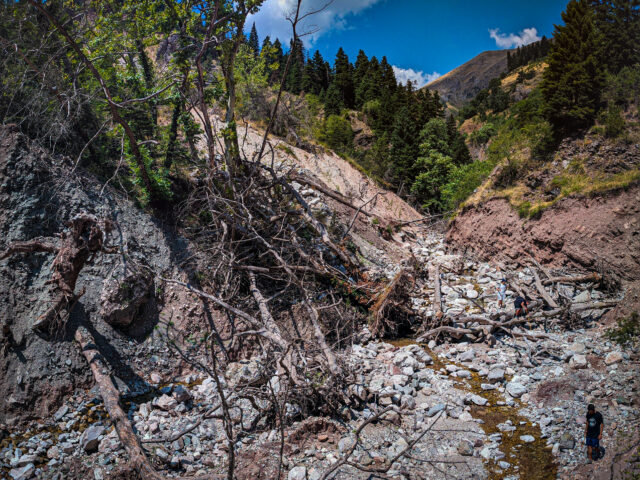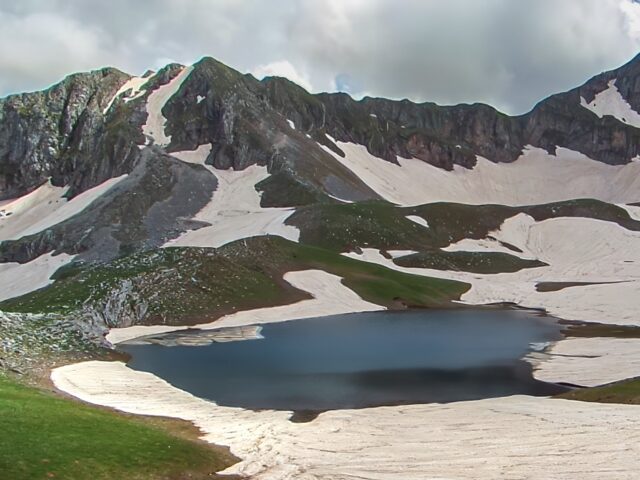10.Tzourtzia Waterfalls ‘The Demon’s Mandani’
“The Devil’s Mandani”
Address
Kalambaka 422 00
GPS
39.583705958997, 21.237162351608
North of the village of Tzourtzia (Agia Paraskevi) located on the eastern slopes of Tzoumerka, in a narrow mountain basin, we find the largest waterfall in the area, which the locals call “The Devil’s Mandani”. A path leads to the waterfall that starts from the chapel of Agios Georgios on the north side of the settlement, crossing the stream bed on foot as an earlier flood destroyed the concrete bridge. The classic hiking route follows the eastern side of the valley via the path. A landslide in January 2021 closed the bed of the Kali Pigi stream along the path, and forced the torrent to dig a new bed on the eastern side. In the final part of the route, the path follows the rocky bed of the stream upwards and leads to the waterfall. The waterfall is located at an altitude of 1100 meters in a beautiful landscape with fir trees. The waters of the waterfall fall with a rush from a cliff that exceeds a height of 15 meters. Due to the rush of the water, during the fall, a vortex of the flow is created, resulting in the deepening of the bed and the creation of a small natural lake. The alternative route can be done by 4×4 or agricultural vehicle. The dirt road that ascends to Agia Marina above the village of Tzourtzia and then leads to the western side of the valley above the waterfall. The waterfall is approached by a downhill path ~500 meters from this point. It should be noted that access to the waterfall is only possible during the summer months, as the streams and torrents are inaccessible in winter due to the flow of water. The name ‘Mandani’ comes from the traditional wooden structure for stirring and washing woolen fabrics in watermills, and is given to corresponding natural forms that resembled that and had the same use.
Waterfalls in mountainous areas are created due to the local presence of rocks with different behavior in water erosion and abrupt changes in the bed of mountain streams that have not been smoothed by the flow of water. In the mountain basins upstream of Tzourtzia (Agia Paraskevi), large landslides occur on the slopes on either side of the torrents. These landslides locally push the torrent bed and force it to begin to form a new bed laterally. These displacements from landslides create a zigzag in the riverbed, instead of a relatively straight line, as they transport hard rocks that are not quickly sculpted by the flow. These abrupt changes in the riverbed do not allow for the rapid smoothing of the riverbed, resulting in local steep drops where there is an alternation from hard to softer rocks.

